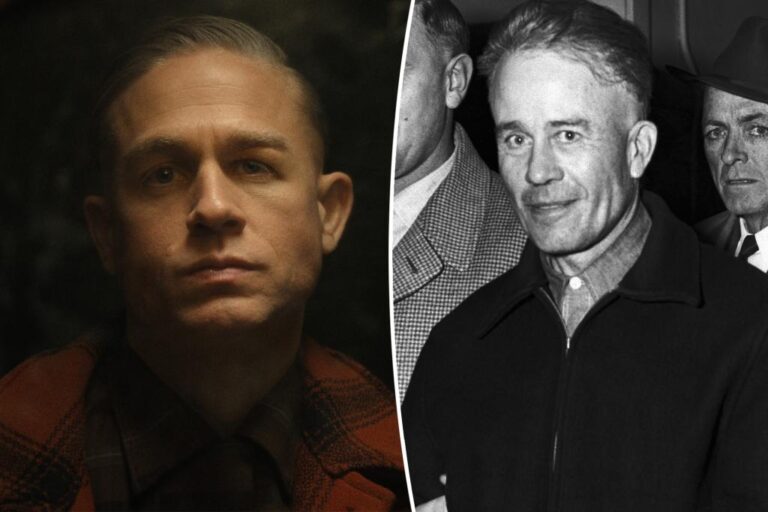On October 3, 2025, Monster: The Ed Gein Story on Netflix arrived as the newest season of Ryan Murphy’s acclaimed Monster anthology. The series revisits one of the darkest chapters in American crime history, shining a harsh light on the man whose grotesque acts shaped modern horror. Unsettling and psychologically complex, the show promises to unearth the details of Ed Gein’s crimes and the disturbing forces that molded him.
The Ed Gein Story on Netflix and Its Cast of Faces
Charlie Hunnam takes on the lead role of Ed Gein, an infamous murderer and grave robber whose legacy still casts a shadow across pop culture. Laurie Metcalf plays his controlling, religious mother, Augusta, whose influence over Gein has been seen as central to his warped development. Suzanna Son, Tom Hollander, and Olivia Willians also join the cast, adding dramatic weight.
Hunnam approached the role with unusual intensity. Reports revealed that he located rare archival recordings of Gein’s voice, materials even Netflix researchers hadn’t been able to obtain. The deep preparation allowed him to replicate Gein’s quiet demeanor while hinting at the horror beneath. Director Max Winkler said he was shocked at how far Hunnam pushed himself, describing his transformation as eerie and unsettling. Hunnam also dropped 30 pounds to embody Gein’s gaunt, reclusive appearance.
Crimes That Still Echo
The real story of Ed Gein is almost too horrific to believe. In 1957, police entered his farmhouse in Plainfield, Wisconsin, uncovering a scene of unimaginable horror. Instead, they found chairs upholstered with human skin, bowls fashioned from human skulls, and masks stitched from the faces of the dead. Gein admitted to murdering Bernice Worden and Mary Hogan, but investigators believed his depravity extended beyond two killings. However, most of his crimes were committed using corpses that he dug up from local cemeteries.
The grotesque discoveries shocked American and became the foundation for some of the most enduring villains in film history. Norman Bates in Psycho, Leatherface in The Texas Chainsaw Massacre, and Buffalo Bill in The Silence of the Lambs all trace their lineage back to Ed Gein. By returning to his story, Netflix is revisiting a killer while exploring the cultural roots of horror itself.
Netflix’s Creative Liberties in the Ed Gein Story
While Monster: The Ed Gein Story on Netflix is grounded in real events, the show takes several creative liberties that stretch or dramatize historical record:
Hollywood connections: The series introduces Alred Hitchcock (Tom Hollander) and Alma Reville, suggesting a direct link between Gein’s crimes and the creation of Psycho. Historically, Hitchcock was inspired by Robert Block’s novel Psycho, which was loosely based on Gein, but there’s no evidence that Hitchcock and Gein ever personally intersected.
The Evelyn Hartley subplot: Addison Rae portrays Evelyn Hartley, a teenager who disappeared in 1953. While her case remains unsolved, there’s never been verified evidence tying her disappearance to Gein. Netflix uses her story as a dramatic thread.
Ilse Koch parallels: The series implies that Gein’s gruesome use of human skin may have been influenced by Nazi war criminal, Ilse Koch, infamous for atrocities involving human remains. No historical record links Gein to Koch or suggests he even knew of her crimes.
Adeline Watkins romance: The show dramatizes Gein’s supposed 20-year relationship with Adeline Watkins, a claim she has contradicted herself. Netflix’s Monster anthology leans into this contested storyline to explore themes of Gein’s repression and companionship.
A Legacy That Refuses to Die
Ed Gein died in a mental institution in 1984, but his crimes never left public imagination. By revisiting his life through a modern lens, Monster: The Ed Gein Story on Netflix reopens questions about nature vs. nurture, violence, trauma, and the blurred line between human frailty and monstrosity.

